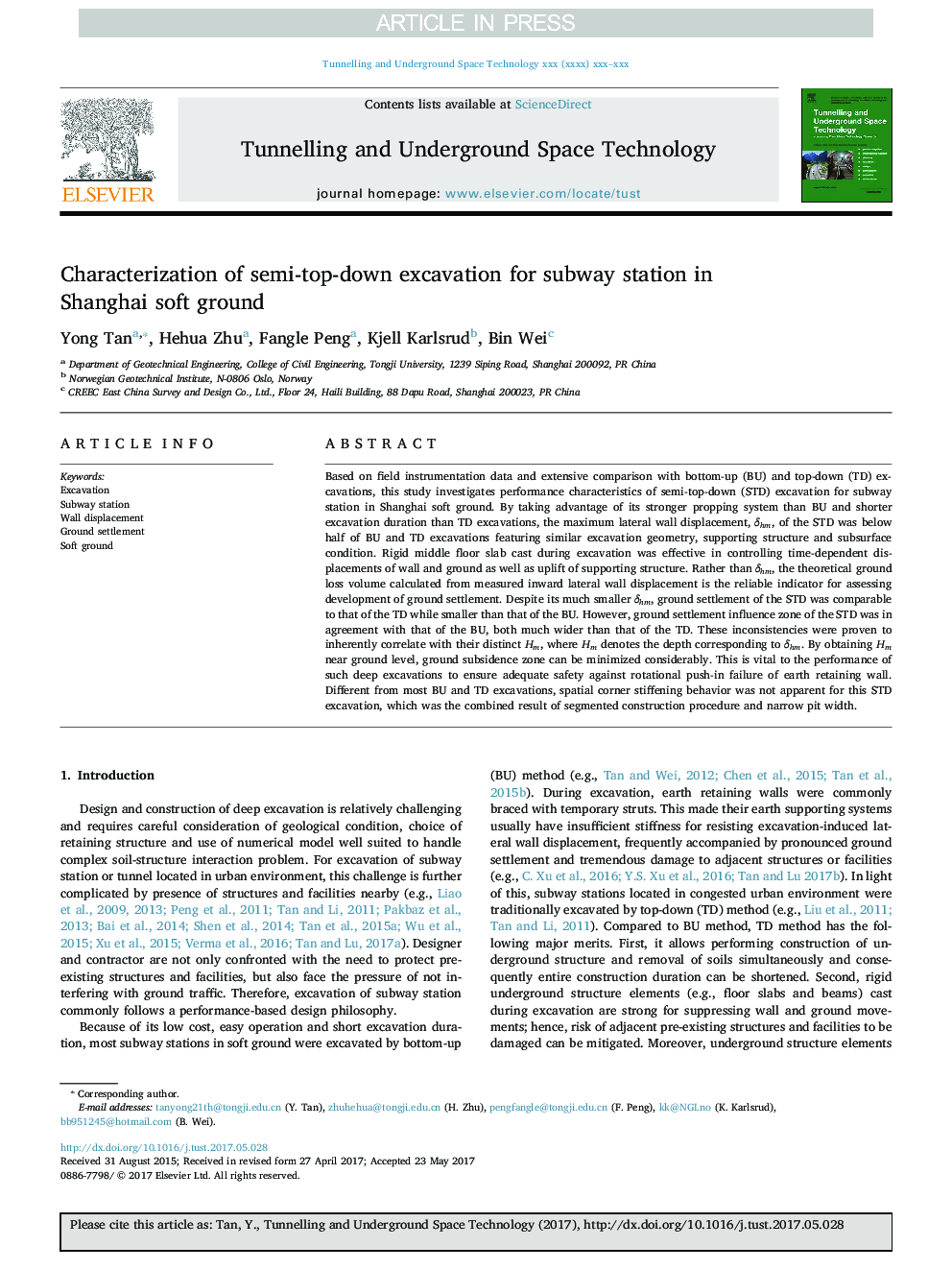| Article ID | Journal | Published Year | Pages | File Type |
|---|---|---|---|---|
| 4929365 | Tunnelling and Underground Space Technology | 2017 | 18 Pages |
Abstract
Based on field instrumentation data and extensive comparison with bottom-up (BU) and top-down (TD) excavations, this study investigates performance characteristics of semi-top-down (STD) excavation for subway station in Shanghai soft ground. By taking advantage of its stronger propping system than BU and shorter excavation duration than TD excavations, the maximum lateral wall displacement, δhm, of the STD was below half of BU and TD excavations featuring similar excavation geometry, supporting structure and subsurface condition. Rigid middle floor slab cast during excavation was effective in controlling time-dependent displacements of wall and ground as well as uplift of supporting structure. Rather than δhm, the theoretical ground loss volume calculated from measured inward lateral wall displacement is the reliable indicator for assessing development of ground settlement. Despite its much smaller δhm, ground settlement of the STD was comparable to that of the TD while smaller than that of the BU. However, ground settlement influence zone of the STD was in agreement with that of the BU, both much wider than that of the TD. These inconsistencies were proven to inherently correlate with their distinct Hm, where Hm denotes the depth corresponding to δhm. By obtaining Hm near ground level, ground subsidence zone can be minimized considerably. This is vital to the performance of such deep excavations to ensure adequate safety against rotational push-in failure of earth retaining wall. Different from most BU and TD excavations, spatial corner stiffening behavior was not apparent for this STD excavation, which was the combined result of segmented construction procedure and narrow pit width.
Related Topics
Physical Sciences and Engineering
Earth and Planetary Sciences
Geotechnical Engineering and Engineering Geology
Authors
Yong Tan, Hehua Zhu, Fangle Peng, Kjell Karlsrud, Bin Wei,
